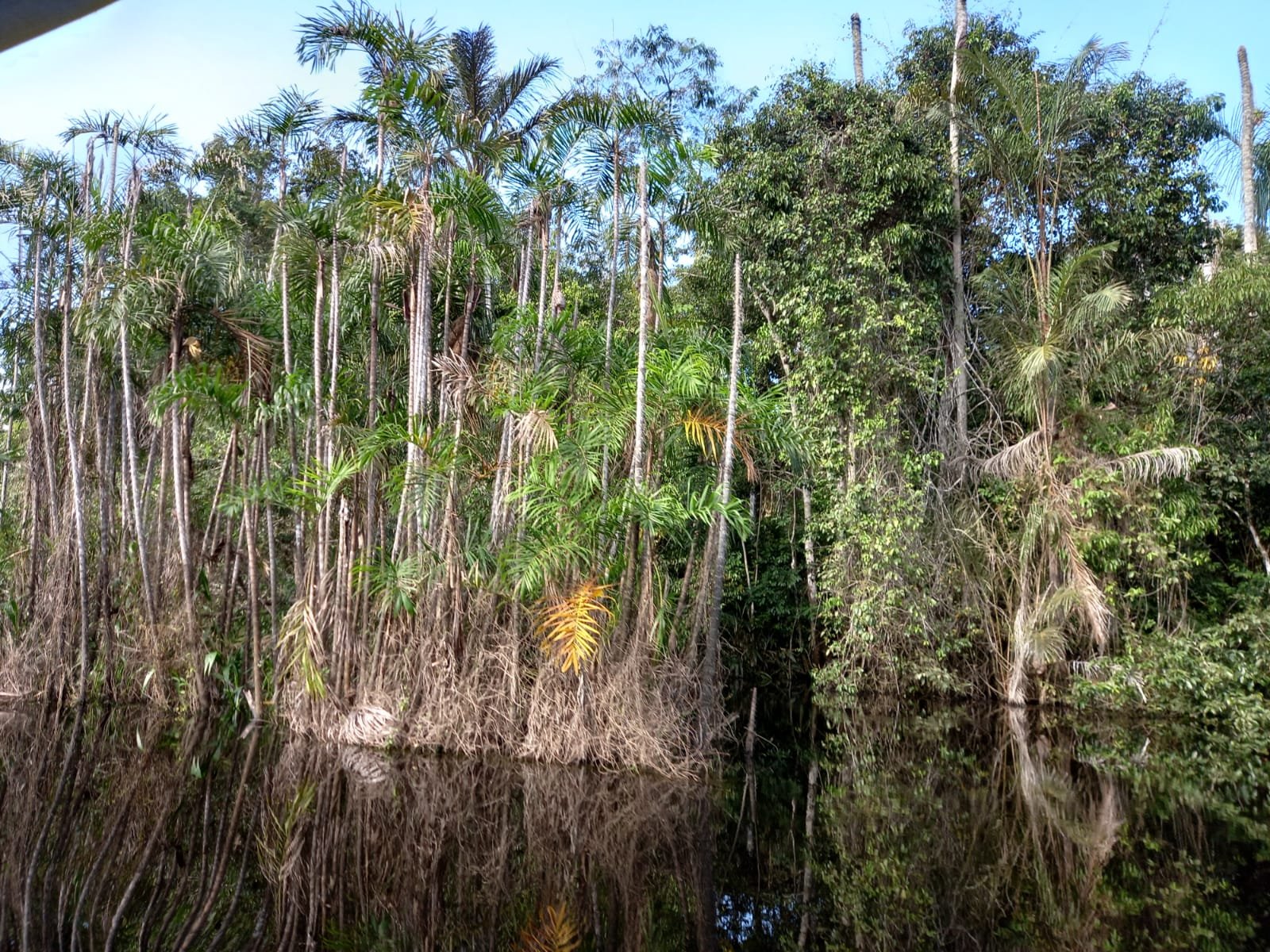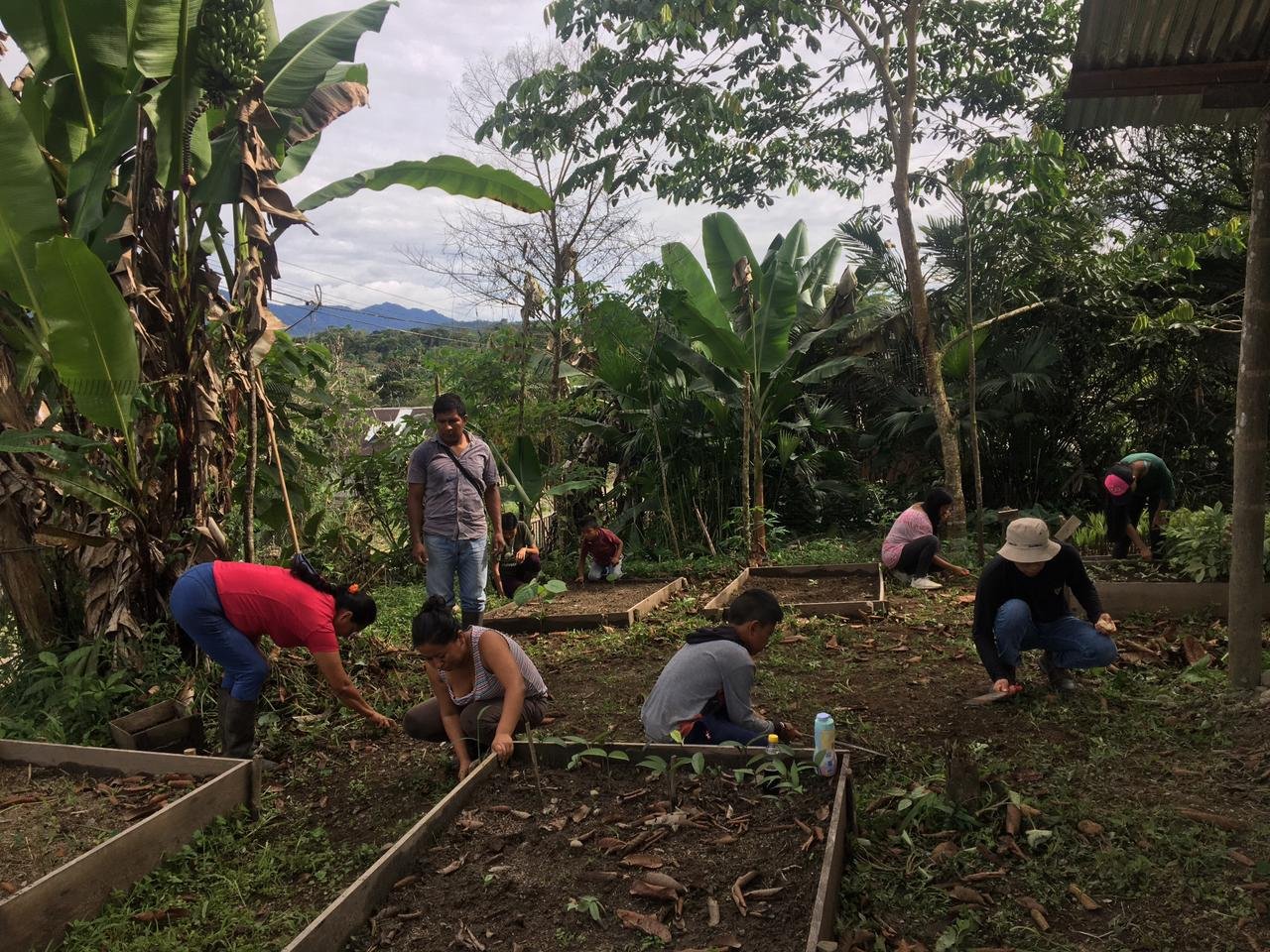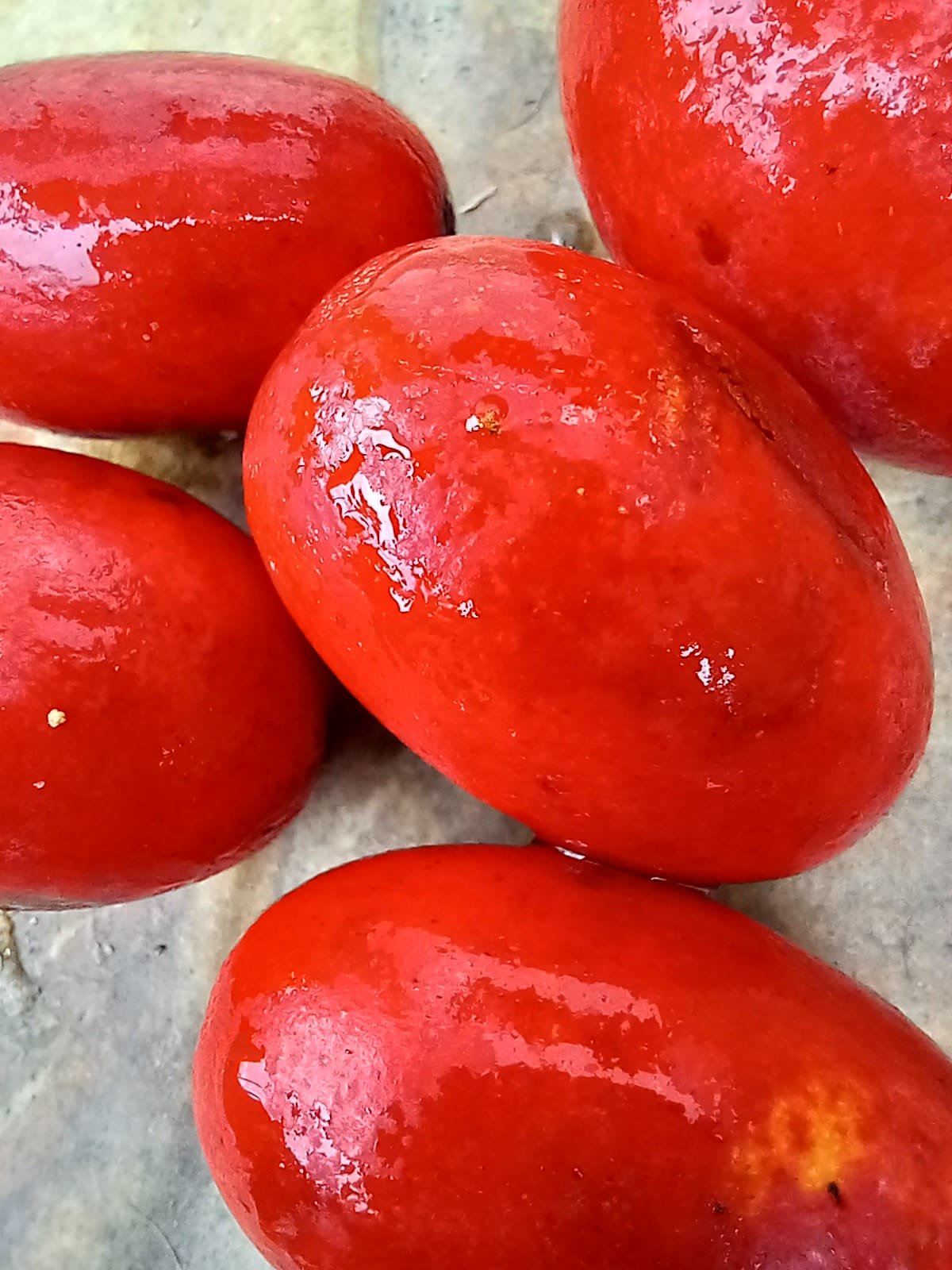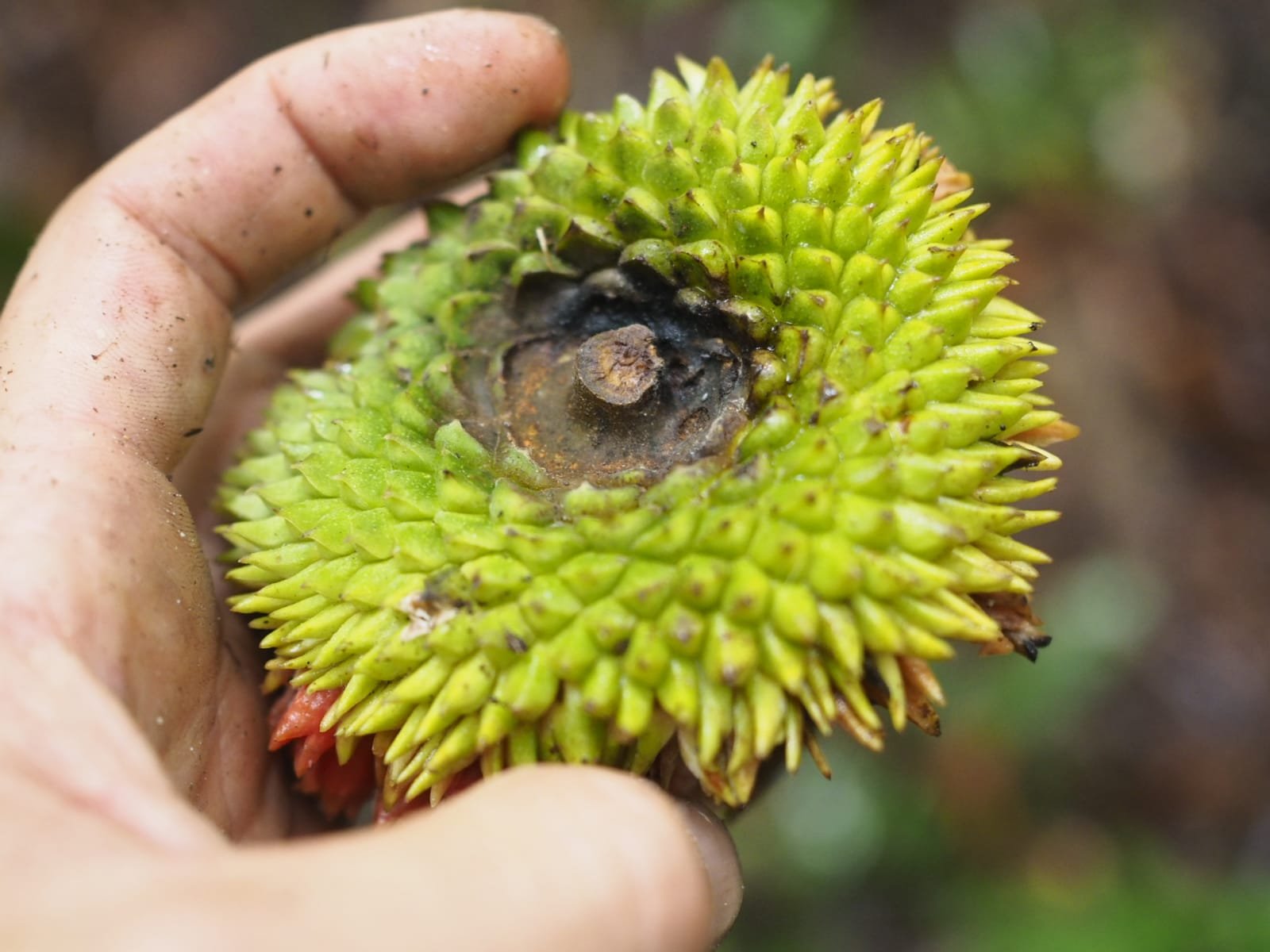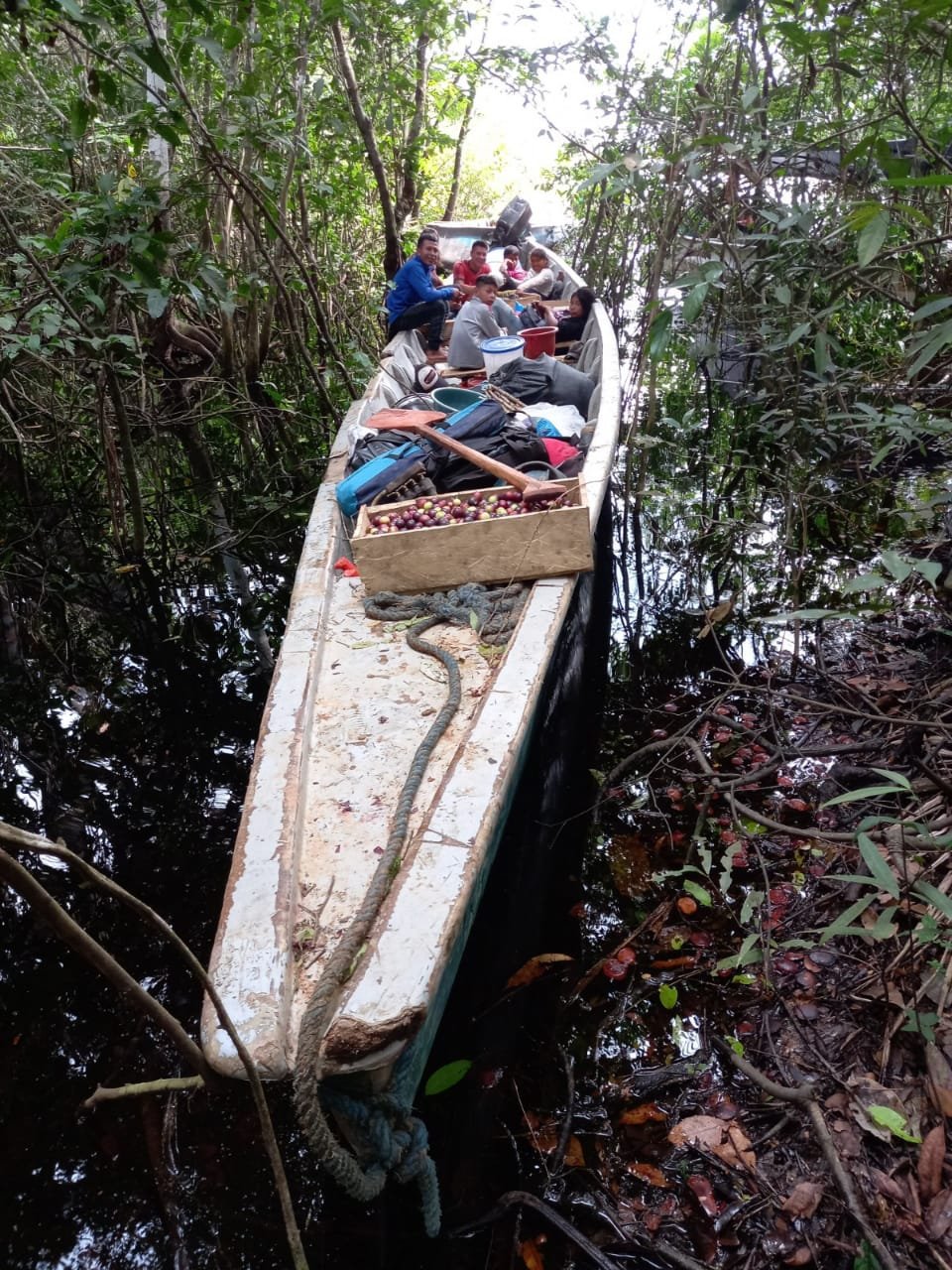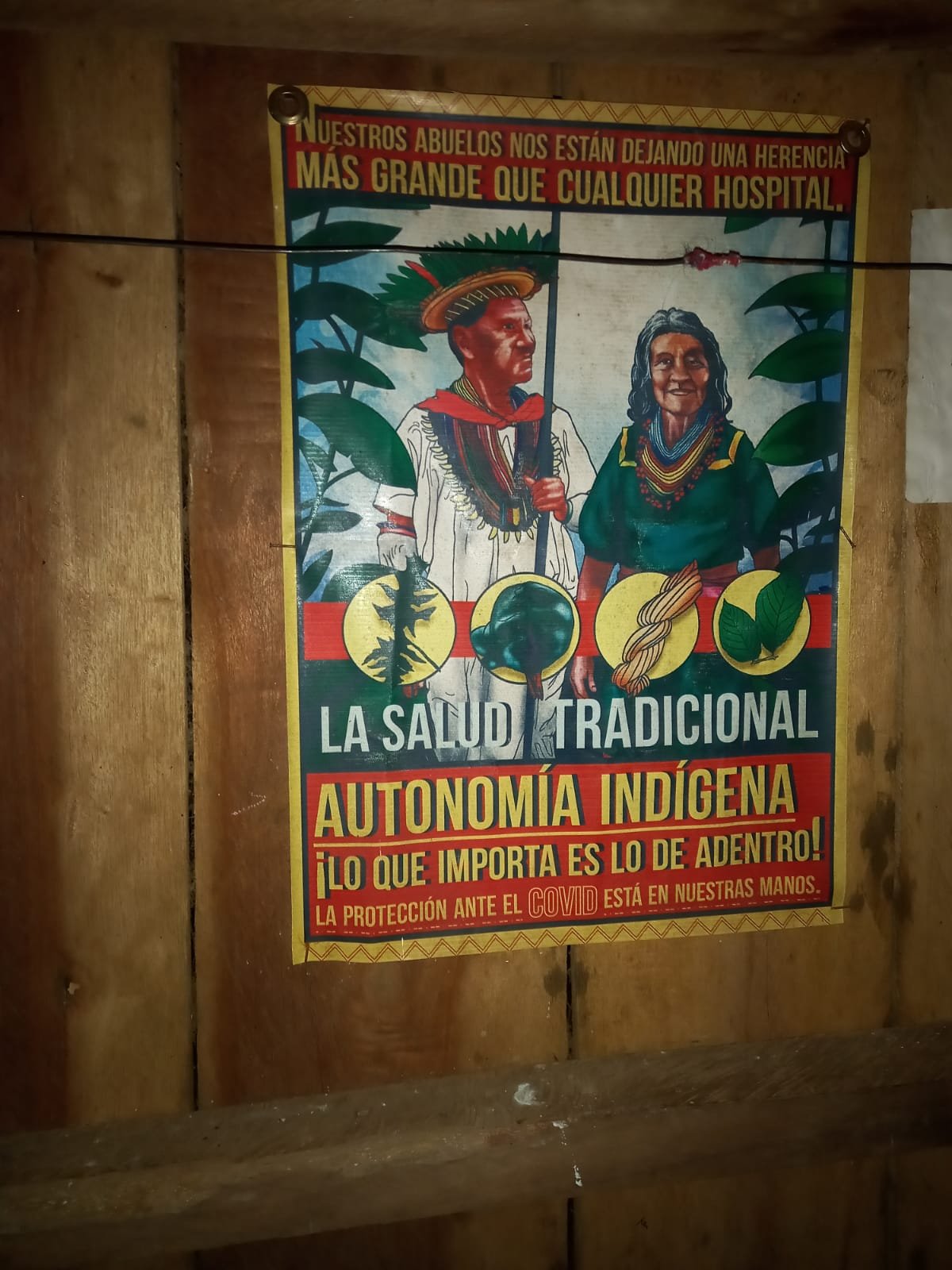Without our forests we cannot be Siekopai
“Without our forests we cannot be Siekopai”
This article, submitted by our partner YAKUM and written by Mike McColm, details the the Siekopai, Remolino community and the history of their fight to safeguard their lives and ways of living. From these insights, we can learn from and support their solutions to defend their future - which is deeply entwined to the protection of their forests.
What if a violent and racist force invaded your neighbourhood and told you that everything which meaningful and important to your life is going to be erased? This would include your language, your means of growing or obtaining food, your system of education, music, art, the time you spend with your children, where women give birth, who your community leaders are, your religion, medical system, and technology.
Adding to the calamity, your view of the world, and the world itself around you are irrevocably eroded or changed forever with foreign language, customs, and education. What if these pressures were persistent and coming from dozens of points of unavoidable, unpleasant, and unwanted social and economic contact with the outside world.
…And, what if this imposing group cut down your forest?
BACKGROUND
The Siekopai people have a century’s long history of settlement and movement throughout the headwaters of the Amazon basin and to this day occupy and protect large, vital areas of rainforest in Ecudor, Peru and Colombia. Centuries old Siekopai clan movements were abruptly stifled due to persecution by European armed forces, European disease, church influence, and business enterprises and more recently by Ecuadorian, Colombian, and Peruvian government laws and institutions. Beginning in the 1960’s, the Ecuadorian government began requiring legal title, with requisites for cutting down forests which created almost insurmountable problems for the Siekopai who did not speak or write Spanish. Corrupt government officials, promoted outside colonization of the forest, to populate the Ecuadorian Amazon to defend against Peruvian invasions. The mestizo colonization of Amazonian Ecuador facilitated by the government was a massive land grab of indigenous territories in Ecuador, resulting in dozens of indigenous groups disappearing from the Ecuadorian Amazon.
The Siekopai who traditionally lived in 5-6 family clans, led by shamans, were very mobile and could freely move , when shortages of wild game, fish, and even wood products arose. Shamans who were political, education and religious leaders before colonization, also traveled by canoe along the river systems, taking along young people to different communities to facilitate intra/community weddings-guaranteeing genetic diversity for healthy children.
While the various Amazon headwater rivers served for Siekopai settlements, these same rivers provided convenient, but often violent boundaries (war zones) between Ecuador, Colombia and Peru who were constantly at war with each other. Ecuador and Peru were at war from the 1940’s until the late 1990’s, and the Siekopai were caught in the cross-fire.
In the 1970’s the first Siekopai settlers moved to Remolino and encouraged/convinced other Siekopai families to move due to the rich black soils found there. The Shamans and the extraordinary forest based intellectual traditions they brought to clans and the community, were relegated to obscurity, and replaced by leaders who had received an “imposed-foreign” education from church mission schools, where they learned to read and write Spanish. This was the beginnings of a persistent and comprehensive assault on Siekopai culture.
During the late 1970’s the new political Siekopai leaders worked to secure the legal status of the Remolino community. With the establishment of a permanent, stationary, large population, in Remolino, Siekopai ancestral “clan” routines and beliefs, freedom of movement, shaman leadership, early pre-dawn education and ancestral health care, mostly disappeared. Formerly small groups of families who could move frequently, as needed, were now permanently grouped into a permanent community setting, with government-imposed institutions. Those different clans are now forced to live together, permanently in one place, has created multi-dimensional group and community tensions.
A flash point right now, is that the Remolino Siekopai are only one of four Siekopai communities who clearly wish to protect their forests and their culture. The 175 Siekopai in Remolino, who constantly defend against invasions, oil companies, African Oil Palm companies, and public shaming by the Siekopai Nation leaders for wanting to conserve their culture and forests, tell us they are in danger of “Cultural Extinction.”
Working in favor of the Siekopai, president’s Rodrigo Borja (early 1990s) and Rafael Correa (2000s) enacted laws and changes in the Ecuadorian constitution providing nationhood and wide ranging, supportive legal rights to indigenous people in Ecuador. Rafael Correa’s concept of a “Pluri-cultural Ecuador” was operationalized in government policy, offices, and laws. With substantial legal rights, political organization, and having obtained land title resulting in the “permanent settlement” of Remolino, and recognized management rights to 22,000 hectares of forest, Remolino’s community statutes for guiding community development, were explicitly written to be in favor of forest and cultural conservation
Defending Rainforest and Culture With their lives
The Siekopai, Remolino community 22,000 hectare rainforest, is an extension and basis for Siekopai Culture is set in the Amazon basin headwaters, in Ecuador. The Siekopai, while only numbering about 700 people, have until now successfully stopped an advancing tidal wave of persistent deforestation caused by government sponsored and supported oil production, African Oil Palm growing , mining, the cattle ranching, and land invasions since the 1980’s. The Siekopai have been as effective as the Ecuadorian National Park Service, managed Cuyabeno and Yasuni National Protected Areas, at protecting their life giving rainforests (Yakum deforestation study 2023.)
The Siekopai will defend their culture and forest, with their lives-as they have demonstrated in ejecting outside invaders, and the organization of an annual cultural renovation event… “Without our forest, we cannot be Siekopai”. They subtly resist outside forces, through their routine activities, by refreshing and reproducing routines and meaning, by spending time together in their forests for hunting, fishing, canoeing, walking and swimming together. The forest grounds their traditions and beliefs, and in it, the Siekopai carry out all of their activities in their language, their clothing, food preparation, and much more. All of these, life giving Siekopai forest activities, routines, and the sense of wellbeing, are faced with immediate threats.
The last Siekopai community in Ecuador, still defending their forest and culture is Remolino, composed of about 175 Siekopai. Cultural extinction is already happening to all other Ecuadorian Siekopai communities, and the Siekopai nation, which have decided to accept African Palm growing, which requires massive deforestation. In fact, the other Siekopai communities and national governing council are pushing Remolino Siekopai to cut their forests and plant African Oil Palm. In fact the national Siekopai political leadership shamed the Remolino Siekopai leaders at a recent national Siekopai meeting - telling them that by conserving their forests, they are “living in the stone age”.
The Aguarico River, along which the Remolino families have all built their homes for domestic water use, is now unusable and murky, and occasionally so toxic that there are massive fish die-offs. Older Siekopai recount that before industrialization, the Aguarico River was crystal clear and they could easily see three to five meters to its bottom. Raw sewage flows from Lago Agrio, a major Ecuadorian Amazon city and oil and mining runoff, and agro-chemicals used for Oil Palm production combine to severely pollute the Aguarico.
Low incomes, and lack of basic community services, make the Siekopai susceptible to meager, short term offers for assistance from oil, palm, and mining companies. The Siekopai consider themselves lacking in basic services and infrastructure, good education, food, and income. In spite of this, they are serious about conserving their forests.
Deforestation Rates and Carbon amounts in the Siekopai forest.
Outside of the Siekopai Territory
The Remolino Siekopai are good stewards of their forests as shown by a relatively low rate of deforestation inside their forests as opposed to forests outside their territory. Compounding extremely high rates of Amazon deforestation in beginning with colonization in the 1970s, the industrialized territories outside of their territory, have shown a consistent rate of deforestation, running at 1 % per year and rising since the year 2000 (Yakum-2023). The drivers for promoting and stopping deforestation during the last twenty years are many and fluctuate for different reasons (Yakum 2023.) There were high rates of deforestation with the expansion of oil fields and access roads from the 1970s to the 2000’s.
Policy can make a difference, as seen in 2014, with a strong environmental minister, during the Correa administration, the deforestation rate dropped greatly, but only for one year. The concerning fact is that the deforestation rate outside of Siekopai territory continues and is increasing. Dramatic satellite maps show African Oil Palm plantations have wedged up against the Siekopai territory during the last 20 years. Palm growing areas have now expanded right up to the Siekopai border
Lower rates of deforestation inside the Siekopai Territory
Until recently inside the Remolino forest area the deforestation rates were almost at zero, reflecting only natural turnover due to wind thrown, disease, and other natural causes. The Siekopai deforestation rate now runs between 10-20% of the deforestation rate outside the territory.
Siekopai Forest and Carbon
Carbon is a commodity on which we can attach a monetary value, while a culture is invaluable, and can be in part understand through the eyes of the people who live it and is a human right to maintain.
The Siekopai are maintaining a large carbon stock by protecting their forest. We estimate that the amount of metric tons of carbon in this forest to be at 176 metric tons per hectare(Yakum-2023.) Over the 22,000 hectares the Siekopai forest, the amount of carbon stored in this forest is appx. 3.8 million metric tons. By protecting their forests, the Siekopai are avoiding deforestation in a way which should be recognized, for their contribution to haltingclimate change.
Solutions
The Siekopai in interviews and focus groups, conducted comprehensively during 2022 throughout Remolino, have expressed that they would like to develop the following work to support protecting their culture and forest.
NOTE:
Before initiating any of their priority projects, the Siekopai themselves have requested comprehensive and understandable capacity building on the basic administrative organizationand leadership skills, accounting, and project management, done at their pace. The Siekopai told us in interviews and group discussions how to develop successful programs and what to avoid. In part this needs to be done in the Siekopai first language-Paikoka. Importantly:
(1) There is no direct translation between Spanish and Paikoka.
(2) Siekopai thinking, language and text is organized very different from Western traditions.
Siekopai Projects and Program proposals.
Based on interviews and focus group discussions during 2023.
1. Building basic services and infrastructure, installing secure walking trails to the river and throughout the community. Installing solar panels and running water in homes.
2. Conserving their forest through territorial defense work and eco-tourism.
3. Developing food security through planting fruits, nuts, and food producing palms. Special plantings on deforested invader areas. Developing fish-farming ponds and raising chickens.
4. Educational reform to include many elements of ancestral education, and up-to-date technology. Building ancestral schools. Programing time for pre-dawn ancestral Siekopai education including art, music, ceramics and other skill training and knowledge exchange. Programming additional time so that the Siekopai students can spend time with their parents in the forests and help on home gardens.
5. Establishing small eco-friendly businesses, for food product production, and wild collections of products
6. Set up an emergency health fund for evacuation of Siekopai to area hospitals and for payment of treatment.
7. Set up an educational scholarship fund.
8. Youth group formation, development and support for program development.
9. Elderly care fund
10. Future micro Siekopai project fund for innovative Siekopai programs and initiatives.


